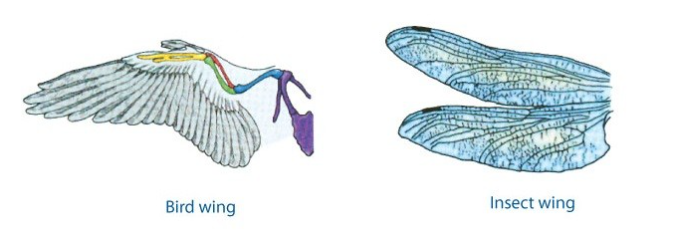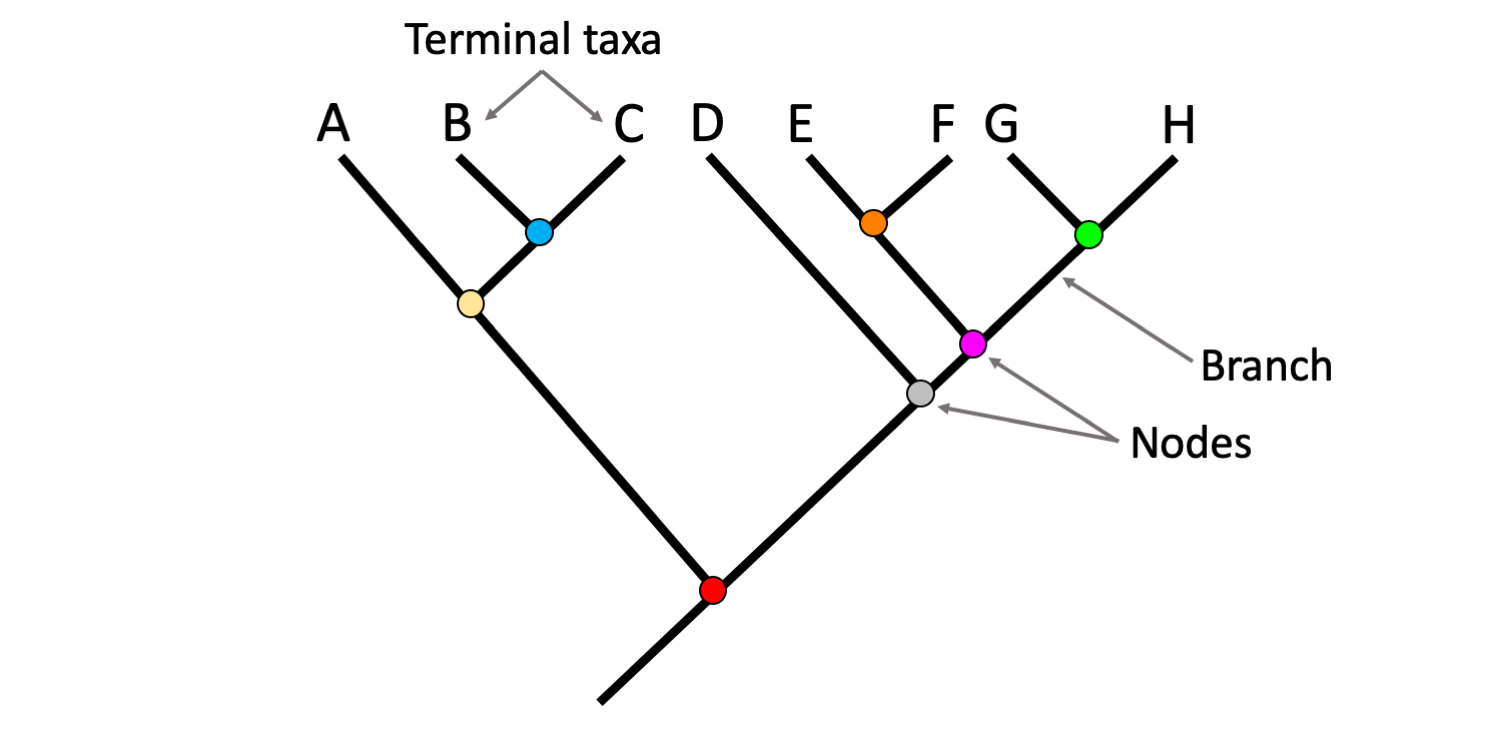A population of beetles has green and brown coloring. Birds more easily spot and eat green beetles. Over time, the population has more...
A. Green beetles due to natural selection
B. Brown beetles due to differential selection
C. Brown beetles due to natural selection
D. Green beetles due to differential selection
C. Brown beetles due to natural selection
Which of the following best describes “survival of the fittest”?
A. The strongest animals always survive
B. Only the largest animals reproduce
C. The organisms best suited to the environment are more likely to survive and reproduce
D. All organisms have the same chance of survival
C. The organisms best suited to the environment are more likely to survive and reproduce
What is the most accurate way of determining how closely related two organisms are?
A. Their DNA sequences
B. Their size
C. Their diet
D. Their speed
A. Their DNA sequences
(a.k.a. Comparative Biochem)
Which of the following would most likely be the strongest cause of natural selection in a population?
A. The death of a large number of organisms due to a particular disease
B. Extra smog in the air due to pollution
C. A heatwave in a summer season
D. Changes in weather during a single week
A. The death of a large number of organisms due to a particular disease
What is leaf A?
A. White oak
B. Pine
C. Holly
D. Magnolia
D. Magnolia
Which of the following is not required for natural selection to occur?
A. Variation in traits
B. Inheritance of traits
C. Equal survival for all individuals
D. Competition for resources
C. Equal survival for all individuals
If a trait provides no advantage or disadvantage in survival or reproduction, what is likely to happen to that trait over time?
A. It will definitely disappear
B. It will become dominant
C. It will immediately become harmful
D. It will likely remain in the population
D. It will likely remain in the population
Which of the following is an example of a vestigial structure?
A. Bones in bugs
B. Tailbone in humans
C. Fins in whales
D. Wings on a bird and a bat
B. Tailbone in humans
With continued usage of antibiotics, populations of bacteria grow more resistant to them over time. What allows the bacteria to evolve this way?
A. Competition between individuals
B. Genetic variation within the population allowing some bacteria to survive and reproduce
C. Individual bacteria that begin to grow stronger than others
D. Bacteria eat the antibiotics
B. Genetic variation within the population allowing some bacteria to survive and reproduce
Which of the following traits distinguishes an amphibian from a bird?
A. Tetrapod
B. Develop from blastula
C. Amniotic egg
D. Hair
C. Amniotic egg
Why is genetic variation important for natural selection?
A. It ensures all individuals are the same
B. It gives natural selection different traits to select for
C. It allows the environment to stay stable
D. It helps all individuals survive equally
B. It gives natural selection different traits to select for
Which of the following best explains why antibiotic resistance in bacteria is an example of natural selection?
A. Bacteria choose to become resistant
B. All bacteria are equally affected by antibiotics
C. Some bacteria have mutations that help them survive antibiotics, and those bacteria reproduce
D. Antibiotics cause all bacteria to become resistant over time
C. Some bacteria have mutations that help them survive antibiotics, and those bacteria reproduce
What is this an example of?

A. Analogous structures
B. Homologous structures
C. Inherited structures
D. Complementary structures
A. Analogous structures
Two populations of frogs live in the same area but have different mating calls and do not interbreed. Over time, they become different species. This is an example of:
A. Genetic drift
B. Geographic isolation
C. Reproductive isolation leading to speciation
D. Stabilizing selection
D. It makes all individuals identical
C. Reproductive isolation leading to speciation
Which of the following species would be the most closely related?
A. The camel and goat
B. The minke whale and sheep
C. The cow and goat
D. The humpback whale and the cow
C. The cow and goat
A farm infested with insects was regularly sprayed with pesticides over 3 generations of insects. The graph shows the insects over these three generations.

What can be concluded?
A. The number of insects resistant to pesticides increased in each generation.
B. The number of insects susceptible to pesticides increased in each generation.
C. The number of insects resistant to pesticides remained the same in each generation.
D. The number of insects susceptible to pesticides remained the in same each generation.
A. The number of insects resistant to pesticides increased in each generation.
In a species of fish, a new genetic trait causes individuals to die at a much younger age than normal. However, fish with this trait produce 20 times more offspring than those without it. Over several generations, what is the most likely effect on the population?
A. The population will become extinct due to shorter lifespans
B. The population’s average lifespan will decrease
C. The trait will disappear because it reduces individual survival
D. The trait will have no impact on the population over time
B. The population’s average lifespan will decrease
Comparative embryology provides evidence for evolution because:
A. All embryos grow at the same rate
B. Embryos of different species show similar stages of development
C. Embryos are fully formed versions of adults
D. Embryos of related species always look completely different
B. Embryos of different species show similar stages of development
During the last ice age, Death Valley was covered by a huge lake. When the ice age ended, the region became dry, and only the spring-fed ponds remained. Pupfish that previously formed a single species in the lake were now in several different ponds. With the passage of time, the pupfish in each of the ponds developed into different species that could no longer interbreed. Why did they become new species?
A. an increased competition for food
B. an accumulation of gene mutations
C. differences in the sizes of the ponds
D. differences due to geographic isolation
D. differences due to geographic isolation

On the phylogenetic tree above, which color likely represents a genus differentiating into different species?
A. Red
B. grey
C. Yellow
D. Orange
D. Orange
Define phototaxis, thermotaxis, and chemotaxis and provide an example of each.
Phototaxis: moving toward or away from light
Chemotaxis: moving toward or away from chemicals
Thermotaxis: moving toward or away from heat

